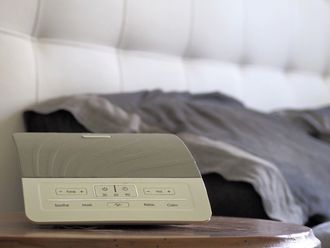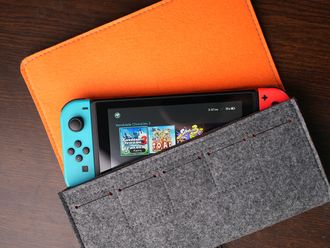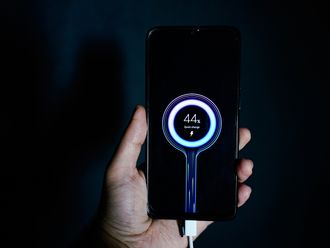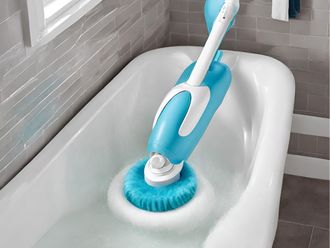
Just a decade ago, 3D printers were massive, expensive machines, reserved for factory floors and high-end tech organisations. Well, that’s no longer the case.
Today’s 3D printers are smaller, more affordable (some cost less than the price of a smartphone) and have become incredibly useful tools for designers, engineers, educators, hobbyists and other consumers. Optimised for different kinds of printing, you can now find models geared towards professionals – with glass doors so that you can see the magic happen as it’s working – as well as budget models with both open and closed frames.
But which kind of 3D printer best suits your needs? We sought the advice of Mohammed Yusuf, general manager at Printzo printing services in Dubai. He shared tips on how best to go about selecting a 3D printer, and recommended ways in which, you can immerse yourself in a local community of 3D printing tinkerers, right here in the UAE. Scroll down to read his advice.
Now that you’re ready to bring your creative vision to life, check out our curated list of the best 3D printers you can buy from Amazon, based on our expert’s recommendations and top-rated reviews. Purchase with Amazon Prime to take advantage of free, fast delivery.
1. Best Overall: Original Prusa i3 MK3S+
Pros
- Easy to set up and use
- High-quality results
- Reliable and consistent device
- Excellent features
- Compatible with most materials
Cons
- LCD display is outdated
This award-winning 3D printer comes highly recommended by Yusuf, who said: “The MK3S+ stands as Prusa Research's flagship 3D printer. It boasts a polished design, exceptional print quality, and extensive community support.” The printer comes with an extruder, numerous sensors and a new magnetic MK52 heat bed with replaceable PEI steel printing paper. All of its moving parts are there to ensure your printed product emerges perfectly. The system has a fully automatic mesh bed levelling process, for instance, so it creates a virtual heightmap of the print area before printing to ensure the first layer is spot on, thereby minimising errors. The device is also fully compatible with a wide range of materials from polycarbonate to PETG (a thermoplastic polyester). Beginners in the comments say the printer was easy to set up and navigate, thanks to the detailed instructions manual. However, the machine’s LCD display panel looks dated and isn’t intuitive to work with, according to reviewers.
Bonus: Buy with 0% installments and pay Dh492.65 for 12 months with select banks.
2. Best for Beginners: Anycubic Kobra 2 Neo
Pros
- Prints fast and accurately
- Easy to assemble and use
- Includes useful fine-tuning features
- Good levelling system
Cons
- Noisy fans
- Can become hot with use
When you’re buying a 3D printer for the first time, you’re likely looking for an affordable option that’s easy to set up and use, offers excellent print quality and produces consistent results. The Anycubic Kobra 2 Neo checks all these boxes, and it’s extremely fast, to boot, with a maximum print speed of 250mm/s. Ideal for beginners, it’s a solid low-risk 3D printer for those looking to experiment and learn along the way. The printer features linear propulsion and input shaping functions that you can use to reduce spillage and print resonance, to create remarkably smooth and clear models. The device’s LeviQ 2.0 automatic levelling system intelligently supports different usage scenarios, while the integrated extruder and cooling system works to both quickly melt filament and cool it with a 7,000rpm fan to ensure rapid molding of the model. Reviewers say set-up is so easy, an eight-year-old with LEGO building experience could do it within 20 minutes. On the downside, it can get quite noisy and hot with use.
Bonus: Buy with 0% installments and pay Dh116.48 for 12 months with select banks.
Warranty: The manufacturer provides one-year warranty, with the print head covered for three months and the heat bed for six months, along with lifetime technical support.
3. Best High-Speed Printer: AnkerMake M5C
Pros
- Great print quality
- Speedy output
- Large print bed
- Easy-to-use slicer software
Cons
- No on-device screen
- Needs mobile app to load and unload filament
An open-frame 3D printer that’s easy to assemble and use, AnkerMake M5C offers a surprisingly generous print bed for its affordable price. Reviewers say the prints it produces are of excellent quality, even when you use its default settings. With PowerBoost 2.0 technology and a lightweight extruder, the M5C can print at speeds of up to 500mm/s, while maintaining 0.1mm precision – so it’s not just incredibly fast, but accurate, too. Another advantage is the ability to control it from anywhere, via a smartphone app (it connects through Wi-Fi and Bluetooth). But do note that’s the only way to check on the print status or adjust printer controls – there is no control panel on the 3D printer. Despite this minor flaw, the device makes for an excellent budget 3D printer. It has plenty of user-friendly features for beginners or students, from 49-point automatic bed levelling to a flexible PEI magnetic plate that provides a stable and easy-to-remove printing surface.
Bonus: Buy with 0% installments and pay Dh116.58 for 12 months with select banks.
4. Best Budget: Creality Ender-3
Pros
- Easy to assemble
- Seamlessly adds on upgrades
- Fast heating build plate
- Affordable
Cons
- Uneven base
A solid option for those who enjoy do-it-yourself projects, Creality’s Ender-3 offers great value as an open-frame printer. It comes largely preassembled, so it’s easy enough for even beginners to set up. Despite its low price point, it doesn’t compromise on print quality, offering excellent final results. The sturdy and compact device comes with an LCD display and control wheel, and its frame style allows you to attach extras, upgrades and modulations – some of them can even be 3D printed – whenever you like, without affecting its printing performance. Some reviewers comment, however, that the Ender-3 tends to have an uneven base that causes a slight wobble during printing – some remedied the issue by placing a wedge under one corner. Despite this flaw, the budget 3D printer has other factors going for it – a useful power recovery mode, a tight filament pathway that makes it easier to print with flexible materials, and a heated build plate that allows you to easily remove the final model. For its price tag, it’s an excellent option for hobbyists, students and DIY-ers.
Bonus: Buy with 0% installments and pay Dh104.41 for 12 months with select banks.
5. Best Resin Printer: ELEGOO Saturn 3 Ultra
Pros
- Fast printing
- Intricate, detailed results
- Useful LCD screen
- Easy to use
Cons
- Lift-off lid is awkward and bulky
While fused deposition modelling (FDM) is the style of printing most people would recognise – it’s what you’d see in cosplay accessories – resin prints are best for miniatures, and to draw out intricate details, like in tabletop game pieces. ELEGOO Saturn 3 Ultra leads the pack in resin 3D printers, with its seamless operation and high-tech improvements. Powered by a Linux operating system and 4GB RAM, processing and transferring files to this device is easy and fast – it’s also compatible with both 2.4G and 5G Wi-Fi networks. The Saturn 3 Ultra boasts a 10-inch 12K mono LCD screen, which allows you to create highly detailed models with great precision. A four-point levelling system keeps the bed stable and a laser-engraved build plate provides excellent adhesion during the printing process, while allowing you to easily remove the model once printing is complete. The only drawback may be its lift-off lid, which feels cumbersome on the considerably large 3D printer.
Bonus: Buy with 0% installments and pay Dh219.75 for 12 months with select banks.
6. Best for Designers and Engineers: MakerBot Replicator+
Pros
- Easy to use
- Excellent print quality
- User-friendly and powerful software
- Prints from various sources
Cons
- Filament can be pricey
On the high end of the price spectrum is MakerBot Replicator+, a premium 3D printer that’s a good fit for product designers, architects, engineers, small businesses and schools. The device, which is ready to use right out of the box, includes useful workflow features, such as a Smart Extruder+, which detects when you’re out of filament and automatically pauses the print, and a redesigned gantry and Z-stage that offer better reliability and precision than its predecessor. There are plenty of connectivity options to choose from – Ethernet, Wi-Fi or even a USB thumb drive. Reviewers find the MakerBot app to be incredibly intuitive and useful for managing all aspects of the print; it even has built-in CAD (computer-aided design) support. With improved speed, quieter operation, and a larger build area than its predecessor, it’s an excellent option for professionals.
Bonus: Buy with 0% installments and pay Dh1,240.98 for 12 months with select banks.
Who is best suited to use 3D printers?
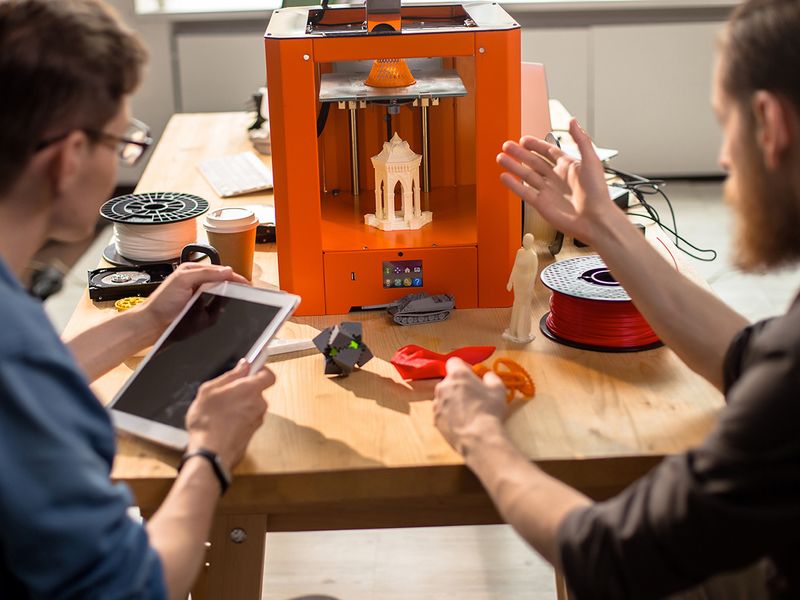
There’s no doubt, a 3D printer is a big investment. So, before clicking ‘add to cart’, it’s important to ask yourself not just what you’d like to print on this device, but why you’d like to print in 3D.
The answer usually lies in who you are. If you’re an educator, you’re likely seeking to install a 3D printer in the classroom or library, with the intention of giving students the ability to manifest their imaginations. If you’re a designer, engineer or architect, you may use it to create prototypes or models as part of your work process. If you’re an artist, fabricating 3D objects might be a compelling new-age form of art, like how the ancient Greeks once saw sculpting entire human forms from marble.
Yusuf highlights a few other areas where 3D printing would be useful: “Students and artists may use it for certain projects or in limited time frames. But small and medium enterprises (SMEs) that are into business-to-business (B2B) supply would be best placed to use 3D printers. For example, [the device] could be used to make customised products, from personalised phone cases and jewellery to bespoke fashion accessories and home decor items. 3D printing enables customisation on a mass scale.”
If you’re not exactly sure what you’d use a 3D printer for, but want to learn, there are ways to achieve this, too. The best way to get a taste of 3D printing is to find other like-minded people who are already engaged in the process.
Yusuf said: “If you're a student or aspiring entrepreneur passionate about learning 3D printing, immerse yourself in online communities and forums where experienced individuals share valuable insights. Additionally, take advantage of opportunities to visit local offices of 3D printer sellers for demonstrations and first-hand experiences. Explore the amazing resources available at top incubators and accelerators, such as In5 Design in Dubai and Sharjah Research Technology and Innovation Park (SRTIP), where 3D printers are available for prototyping. These avenues offer a wealth of knowledge and hands-on experience to help you excel in the world of 3D printing and unleash its incredible potential for innovation and entrepreneurship.”
What features should customers look out for, before buying a 3D printer?
Once again, what you’re using the 3D printer for, will determine the features you should keep an eye out for.
Schools, for instance, would need a device that’s easy to set up and doesn’t require much maintenance. Hobbyists, on the other hand, may want special features, such as the ability to print objects with more than one colour. Designers may look for excellent print quality, above all else.
Either way, Yusuf shared a few tips you could keep in mind before locking down a 3D printer. He said: “Try and test few samples for accuracy and quality, if possible. Make sure you are familiar with the sizes the 3D printer [accommodates], and if it fits your product’s dimensions. If you are just starting off, avoid buying a printer from brands or companies that do not have a local presence, as service and maintenance is frequently needed.”
Our recommendations are independently chosen by Gulf News editors. If you decide to shop through links on our website, we may earn an affiliate commission, as we are part of Amazon Services LLC Associates Program.


